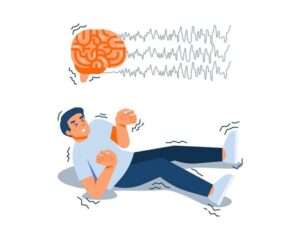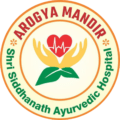Epilepsy

Epilepsy, a neurological disorder characterized by recurrent seizures, has intrigued medical practitioners for centuries. In the world of Ayurveda, the ancient Indian system of healing, offers a unique perspective on epilepsy. This article delves into the intricacies of epilepsy through the lens of Ayurvedic principles, exploring causes, symptoms, diagnosis, and holistic treatments.
Introduction to Epilepsy
Epilepsy affects millions worldwide, impacting not only individuals but also societies. It’s imperative to comprehend the gravity of this condition and explore diverse approaches to its management.
Epilepsy is a neurological disorder characterized by recurrent, unprovoked seizures. A seizure is a sudden, abnormal burst of electrical activity in the brain that can cause a variety of symptoms, including loss of consciousness, convulsions, altered sensations, or abnormal behaviors. Epilepsy can have various causes, such as genetic factors, brain injuries, infections, or structural abnormalities in the brain. It is a chronic condition, and individuals with epilepsy may experience seizures intermittently throughout their lives.
Ayurvedic Perspective on Epilepsy
In Ayurveda, epilepsy is referred to as “Apasmara” or “Moha,” and it is considered a disorder of the nervous system. The classical Ayurvedic texts, such as the Charaka Samhita and Sushruta Samhita, provide descriptions and classifications for various types of seizures and their causes.
A. Ayurvedic Concept of Epilepsy:
According to Ayurveda, epilepsy is believed to result from an imbalance in the three fundamental doshas – Vata, Pitta, and Kapha – which govern the physiological and psychological functions of the body. An aggravation or vitiation of Vata dosha is often considered a primary factor in the manifestation of epilepsy.
B. Causes of Epilepsy in Ayurveda:
- Vata Imbalance: Disturbance in Vata dosha is considered a predominant cause, leading to neurological dysfunction and seizures.
- Dietary Factors: Consumption of incompatible foods, excessive intake of dry and cold substances, or irregular eating habits may contribute to doshic imbalances.
- Trauma: Physical or emotional trauma, especially to the head, can disturb the balance of doshas.
- Genetic Factors: Ayurveda recognizes a hereditary predisposition to epilepsy, indicating a familial tendency.
- Toxins (Ama): Accumulation of toxins in the body, impairing the channels of the nervous system, is considered a contributing factor.
- Other factors: Malfunctions of senses, frequently eating unsuitable food according to Prakruti, excessive emotions etc.
C. Symptoms (Lakshanas) of Epilepsy in Ayurveda:
- Altered Consciousness (Moha): Loss of awareness or altered states of consciousness during seizures.
- Involunt
Recommendations:
– Stress Managem
ary Movements (Angamarda): Uncontrolled and involuntary movements of the limbs or the entire body.
- Foaming at the Mouth (Phena): Foaming or frothing at the mouth during seizures.
- Loss of Bodily Functions (Gatra Hani): In some cases, loss of control over bodily functions during a seizure.
D. Process behind epilepsy according to Ayurveda.
In the progression of epilepsy according to Ayurveda, the condition begins with a person having low Satva (mental clarity and balance) coupled with frequent exposure to causative factors. This leads to a disturbance in the three doshas of the body—Vata, Pitta, and Kapha—resulting in the obstruction of mental activities and a subsequent disturbance in the senses. The individual experiences extreme mental instability, leading to sudden loss of memory and seizures, often accompanied by a loss of consciousness. As time progresses, the doshas decrease, and the mental obstruction reduces, allowing the person to regain consciousness. However, the cycle may continue with frequent attacks of seizures, ultimately leading to the diagnosis of epilepsy.
Ayurvedic Diagnosis of Epilepsy
Ayurvedic diagnosis of epilepsy involves a comprehensive assessment based on the principles of Ayurveda, considering both the physical and mental aspects of the individual. Key elements of the Ayurvedic diagnosis for epilepsy include:
1. Dosha Analysis: Ayurvedic practitioners evaluate the balance of the three doshas—Vata, Pitta, and Kapha—in the individual. Imbalances, particularly in Vata dosha, are often associated with the manifestation of epilepsy.
2. Prakriti and Vikriti Assessment: Understanding the individual’s inherent constitution (Prakriti) and current imbalances (Vikriti) provides insights into the predisposition to certain conditions and the doshic disturbances contributing to epilepsy.
3. Nadi Pariksha (Pulse Examination): Pulse diagnosis is a vital component, allowing the practitioner to detect subtle imbalances in the doshas and assess the overall state of the nervous system.
4. Tongue and Eye Examination: The examination of the tongue and eyes helps identify signs of doshic imbalances and offers indications related to the digestive and nervous systems.
5. Assessment of Mental Health: The practitioner evaluates the mental state of the individual, looking for signs of mental instability, memory loss, and other psychological factors associated with epilepsy.
6. Trividha Pariksha (Threefold Examination):
– Darshana (Observation): Examining physical characteristics and demeanor.
– Sparshana (Touch): Assessing the skin, pulse, and overall physical state.
– Prashna (Questioning): Gathering information about symptoms, triggers, and other relevant details.
Treatment Modalities in Ayurveda
1. Balancing Doshas:
- Herbal Formulations: Ayurvedic practitioners prescribe specific herbal formulations to balance the doshas, with a focus on pacifying aggravated Vata.
- Dietary Modifications: A Vata-pacifying diet is recommended, emphasizing warm, nourishing foods and avoiding triggers like excessive caffeine and stimulants.
2. Panchakarma Therapies:
- Virechana (Therapeutic Purgation): Helps eliminate toxins and balance Pitta dosha.
- Nasya (Nasal Administration): Administering medicated oils through the nasal passage to address imbalances in the head region.
- Basti (Enema Therapy): Anuvasana Basti (oil enema) and Niruha Basti (decoction enema) to nourish and strengthen the nervous system.
3. Herbal Remedies:
- Brahmi (Bacopa monnieri): Known for its neuroprotective properties, it supports cognitive function.
- Shankhpushpi (Convolvulus pluricaulis): Calming herb that may aid in reducing mental instability.
- Ashwagandha (Withania somnifera): Adaptogenic herb with stress-reducing properties.
4. Lifestyle Recommendations:
- Stress Management: Incorporating stress-reducing practices, such as yoga and meditation, to promote mental well-being.
- Regulated Sleep: Establishing a regular sleep routine is essential for overall nervous system health.
- Avoiding Triggers: Identifying and avoiding potential triggers, such as irregular eating habits and excessive sensory stimulation.
5. Pranayama and Yoga:
- Nadi Shodhana (Alternate Nostril Breathing): Balances the nervous system and promotes mental clarity.
- Surya Namaskar (Sun Salutation): Integrates breath and movement, enhancing overall vitality.
6. Mind-Body Practices:
- Meditation: Mindfulness and meditation techniques to improve focus and reduce mental agitation.
- Shirodhara: A therapy involving a continuous stream of warm oil on the forehead, promoting relaxation.
7. Aromatherapy:
- Calming Essential Oils: Lavender and chamomile oils may be used in aromatherapy to induce relaxation and soothe the nervous system.
8. Regular Follow-Up and Monitoring:
- Doshic Balance Check: Regular consultations with an Ayurvedic practitioner to assess doshic balance and adjust treatment accordingly.
FAQs
Yes. But individual responses may vary. Consultation with healthcare professionals is essential.
Results vary, and it depends on individual factors. Consistency in following Ayurvedic practices is key to seeing positive outcomes.
Ayurvedic dietary recommendations are personalized based on an individual’s dosha constitution and imbalances.
Ayurvedic daily routines and preventive measures aim to create a balanced and healthy lifestyle, reducing the likelihood of epilepsy onset
Uniqueness of our therapies
At Arogya Mandir – Shri Siddhanath Ayurvedic Hospital, Miraj, we delve deeply into the ayurvedic examination of each patient. Utilizing noninvasive Ayurvedic diagnostic tools such as Ashtavidha Parikshan and Nadi Parikshan, we precisely determine the pathogenesis of the disease and then prescribe therapies tailored to the specific condition. This approach leads to expedited results.
Our therapies boast the following distinctive features:
– Tranquil and hygienic therapy rooms staffed with trained therapists in a positive environment.
– Selection of appropriate massage oil based on the patient’s Prakruti and the condition of the disease.
– Complimentary Prakruti and Dhatu Sarata examinations before the commencement of therapies.
– Authenticated procedures for each therapy.
– Judicious use of herbal medicines and instruments during the therapy sessions.
– Specialized rooms equipped with all facilities for inpatient care.
Feel free to share this article at no cost.
Copyright message – Dr. Prashant Chivate has published this article on drchivateayurved.org for informational purposes about diseases. Any other use of this article is strictly prohibited. All rights reserved.
